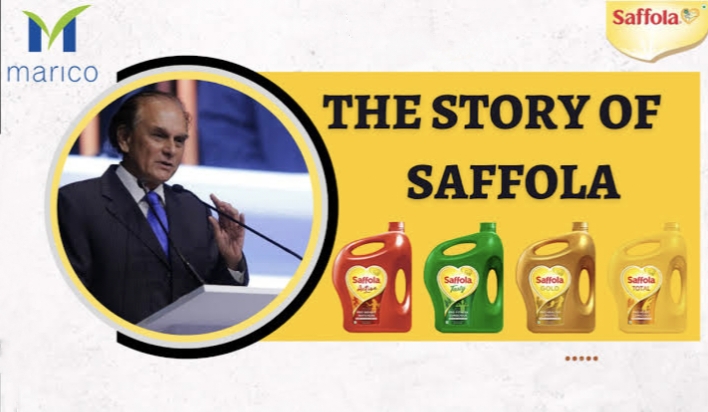My Blog
The Unstoppable Rise of Saffola: How Marico Captured 80% Market Share

Discover the inspiring story of Saffola, an iconic brand in India’s ultra-premium edible oil segment. Over the past 21 years, the stock price of its parent company, Marico, has soared by 17,200%, skyrocketing from ₹2.67 to ₹487 in 2022. By 2021, Saffola held a staggering 81% market share. But how did the Mariwala family turn Saffola into a market leader, outpacing giants like ITC and Hindustan Unilever? Here’s the story of their strategic brilliance and the business lessons we can learn from their success.
The Birth of Saffola: A Solution to a Heart Health Crisis
In the 1960s, medical research highlighted the heart health benefits of safflower oil due to its high polyunsaturated fatty acid content. However, only crude safflower oil was available, and it had a bitter taste. The Mariwala family began refining small quantities of safflower oil for heart patients, which led them to realize the potential market for refined safflower oil in India, a country with a high incidence of heart disease and diabetes.
In 1965, the Mariwala family launched Saffola under the Bombay Oil Company. Despite the promising market, they faced significant challenges, including consumer unawareness and the need to build trust.
Strategic Marketing: Building Trust and Awareness
To establish Saffola, the team identified three key stakeholders:
- Doctors: By partnering with leading medical institutes and holding conferences among cardiologists, Saffola gained endorsements from trusted medical professionals.
- Heart Patients: Through extensive heart health campaigns and free cholesterol checks, Saffola positioned itself as a reliable brand for those with heart issues.
- General Consumers: Saffola educated the public on heart disease prevention, targeting a much larger market. They used TV commercials, radio campaigns, and newspaper ads to spread their message.
By the 1990s, these efforts had scaled to nine cities, reaching 85 lakh people. The “Dial-a-Dietician” program further cemented Saffola’s reputation by offering free dietary advice. This multifaceted approach transformed Saffola into a household name synonymous with heart health.
Expanding the Market: From Patients to Preventative Health
Realizing that the market of heart patients was limited, Saffola shifted focus to preventative health. They targeted individuals at risk of heart disease, a market ten times larger than that of heart patients. Their campaigns highlighted four major risk factors: obesity, hypertension, diabetes, and smoking. By addressing the concerns of housewives about their husbands’ health, Saffola’s ads effectively instilled a sense of urgency and led to widespread acceptance.
Smart Brand Protection: The Launch of Sweekar
When ITC and HUL entered the market with their sunflower oils, Saffola faced a pricing war. Instead of reducing Saffola’s premium pricing, Marico introduced a low-cost variant, Sweekar refined sunflower oil. This move protected Saffola’s premium brand perception while allowing Marico to compete in the lower segment. Sweekar matched competitors in price, media share, and distribution reach, preventing market erosion and maintaining Saffola’s profitability.
Innovative Problem-Solving: Overcoming Supply Challenges
In the 1990s, a safflower seed shortage threatened Saffola’s supply. Harsh Mariwala, CEO of Marico, saw an opportunity in blending oils to maintain supply and improve health benefits. After successfully petitioning the government, Marico was allowed to blend safflower oil with corn oil and rice bran oil. This innovation eliminated supply shortages, stabilized prices, and reinforced Saffola’s market leadership.
Key Business Lessons from Saffola’s Success
- Educate the Market: Solving a problem isn’t enough; educate consumers about the problem’s existence. Saffola’s heart health campaigns created awareness and demand for their product.
- Protect Your Brand: Maintain your premium brand perception. Saffola did this by introducing a low-cost sub-brand, Sweekar, without diluting their core brand’s value.
- Turn Obstacles into Opportunities: View challenges as opportunities for competitive advantage. Saffola’s response to supply shortages and regulatory constraints exemplifies this approach.
Saffola’s journey from a humble beginning to an 81% market share is a testament to strategic marketing, brand protection, and innovative problem-solving. Their story provides invaluable insights for businesses aiming to achieve and sustain market leadership.
